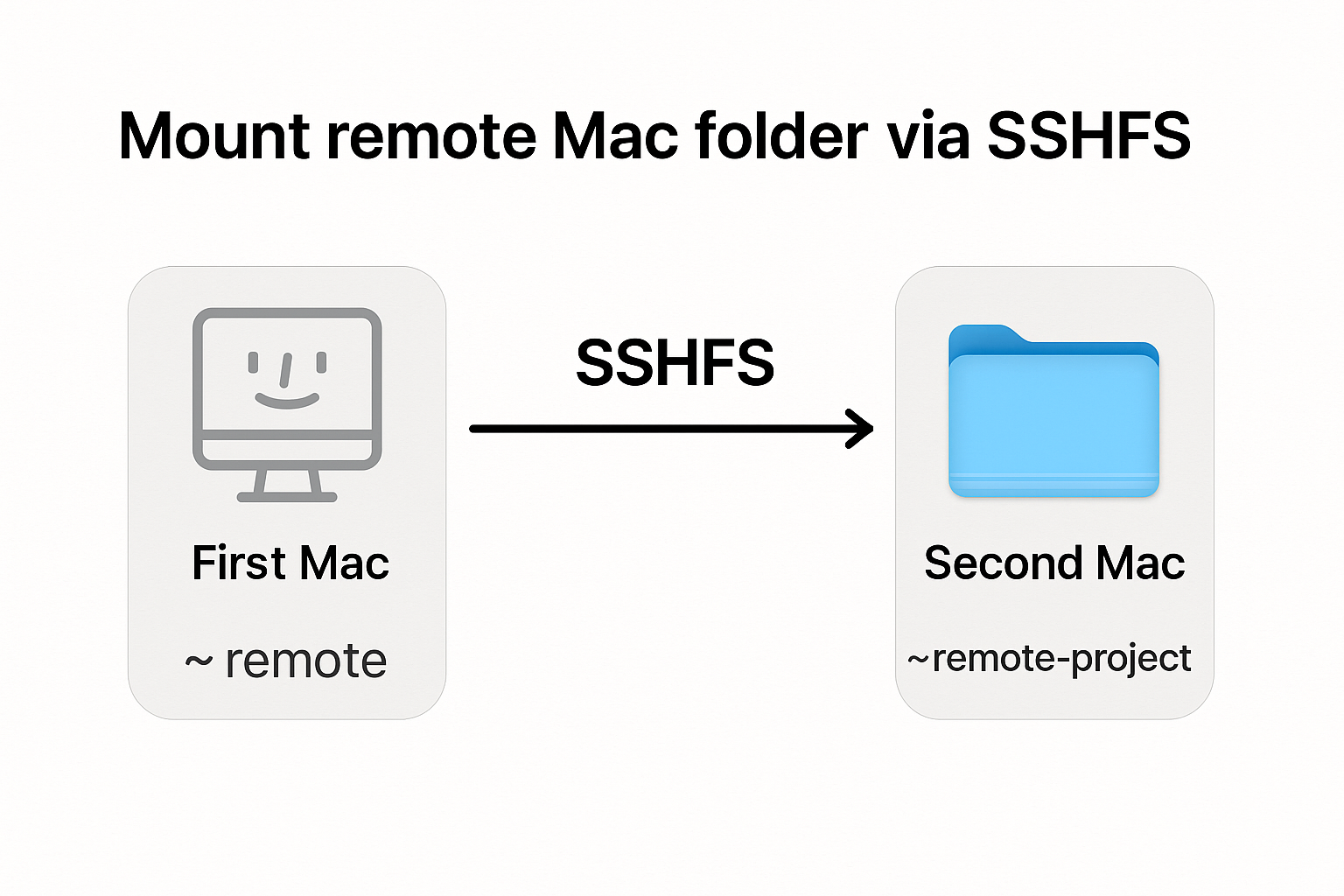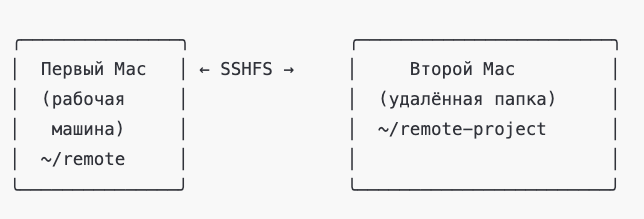
If you have two computers running macOS, you can connect one of the folders from one Mac to the other using SSHFS. This allows you to work with remote files as if they were on your local disk — convenient for development, distributing tasks among multiple machines, sharing data, and backups.
Our strategy: The first Mac (local) connects to a remote folder on the second Mac via SSH and mounts it in a local directory.

Installing SSHFS on the First Computer (the one from which you will access)
Open the terminal and run the following commands:
brew install macfuse
brew tap gromgit/fuse
brew install gromgit/fuse/sshfs-macThese commands install the necessary components: macFUSE and sshfs-mac.
Enabling SSH Access on the Second Computer (the one we are connecting to)
- Go to
System Settings → Sharing - Enable Remote Login
- Make sure your main user has SSH access
ssh your_login_second_pc@your_ip_second_pcIf it connects — everything is ready.
Preparing Folders
On the Second Mac (remote): Create the folder you want to share:
mkdir ~/remote-folderOn the First Mac (local): Create the folder where the remote one will be mounted:
mkdir ~/remoteMounting a Folder with SSHFS on the First Computer
Now you can mount the remote folder on the first Mac. Run the following command in the terminal:
sshfs your_login_second_pc@your_ip_second_pc:~/remote-project ~/remote -o allow_other,default_permissions,reconnectThis command mounts the remote folder remote-project from another Mac into the local folder ~/remote on the first computer via sshfs.
Options used in the command:
| Option | Purpose |
|---|---|
allow_other | Allows access to the mounted folder not only for the user who performed the mount, but also for other users on the system. This is necessary, for example, if you want IDEs (VS Code, WebStorm) to see the contents. ⚠️ Requires permission in /etc/fuse.conf. |
default_permissions | Uses standard Unix permission checks (owner, groups, chmod) instead of only SSH. This helps avoid issues where files are visible but cannot be opened. |
reconnect | Automatically reconnects if the SSH connection is temporarily interrupted (for example, due to a Wi-Fi drop). Very useful if the connection is unstable. |
By default, the allow_other option may not work until permission is added in the fuse.conf configuration file. This is due to macOS security policies that restrict access to mounted file systems.
- In the terminal, create the fuse.conf file:
sudo nano /etc/fuse.conf- Add the line:
user_allow_other- Save the file and re-run the mount command
sshfs your_login_second_pc@your_ip_second_pc:~/remote-project ~/remote -o allow_other,default_permissions,reconnectHow to Unmount the Folder
To unmount the folder, run:
umount ~/Volumes/SSD/test-remoteIf you get the error Resource busy, try:
umount -f ~/Volumes/SSD/test-remoteN.B. If you cannot remember the name of the mounted folder, you can view the list of mounted file systems with the command:
mountIn Summary
Using sshfs between two Macs is a simple way to set up shared file access without the need for synchronization or network drive configuration. It is especially convenient for developers working with multiple machines on a local network. With sshfs, you can work with a remote folder as if it were on your local computer.